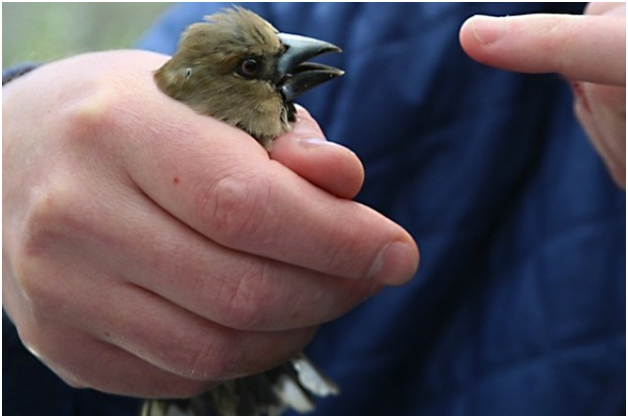
Blog
-
Geiger Readings for April 30, 2014
Ambient office = 72 nanosieverts per hourAmbient outside = 102 nanosieverts per hourSoil exposed to rain water = 101 nanosieverts per hourD’Anjou pear from Top Foods = 87 nanosieverts per hourTap water = 89 nanosieverts per hourFiltered water = 87 nanosieverts per hour -
Radioactive Waste 74 – Radioactive Fracking Filters in North Dakota 2
I have previously posted about the improper disposal of oil filter socks in North Dakota fracking operations. The filter socks are tubular nets that strain liquids during the fracking oil production process. The used filters contain small amounts of naturally occurring radioactive materials. There are legal restrictions that are intended to prevent the disposal of the filters in standard landfills. The illegal dumping is a result of the fracking companies reluctance to spend the time and money to properly dispose of the filters in dumps in other states such as Montana, Colorado and Idaho that permit more radiation in waste. My first post talked about abandoned flatbed trucks with bags of filters, filters found in garbage cans on Indian reservations and an abandon service station in Noonan near the Canadian border that was found to contain hundreds of used filters.
On Thursday, the State of North Dakota confirmed that a new illegal dump site for filter socks had been found near the town of Crosby near the Canadian border. Fifteen garbage cans and twenty five plastic garbage bags full of filter socks were discovered at the site. The previous owner of the land is in jail on an unrelated criminal charge. The new owner is cooperating fully with the State Environmental agency. Apparently the filter socks were covered with snow and not visible when the property was sold recently.
Secure Energy Services, a Canadian company that had been hired to clean up the new Crosby dump, found twice as many filters there as had been originally estimated. They also reported that they had removed forty five cubic yards of radioactive waste from the abandoned service station at Noonan, the largest illegal filter sock dump site found in North Dakota. The Canadian company was concerned about the possible contamination of soil at the Noonan dump site and was carrying out analysis of soil samples. The State has no plans to clear up the site beyond removing the filter socks.
Local and state officials in North Dakota support the creation of a dump site in North Dakota that can take the radioactive filter socks. It is assumed that if there was a legal nearby dump for the filter socks, companies would be less likely to carry out illegal dumping. In some cases, fracking companies even disposed of their filter socks in the trash bins of competing fracking companies.
In the United States, the support for new nuclear power plants is being eroded by the availability of cheap natural gas from fracking. For opponents of nuclear power generation, it is ironic that fracking for natural gas creates radioactive waste that is being improperly disposed of in view of the fact that problems in dealing with radioactive waste are among the major complaints against nuclear power.
Crosby, North Dakota:
-
Geiger Readings for April 29, 2014
Ambient office = 91 nanosieverts per hourAmbient outside = 125 nanosieverts per hourSoil exposed to rain water = 121 nanosieverts per hourOpal apple from Top Foods = 139 nanosieverts per hourTap water = 91 nanosieverts per hourFiltered water = 82 nanosieverts per hour -
Some Species of Birds Have Adapted to the Radiation Released in the Chernobyl Accident
Twenty eight years ago, an explosion and fire at the Chernobyl Nuclear Power Plant in Ukraine released huge amounts of radioactive particles into the atmosphere. The contamination spread over the western U.S.S.R. and Europe. Half a million workers fought the aftermath of the disaster and were involved in the cleanup. A half a billion dollars were ultimately spent. There is an exclusion zone eighteen miles in radius around the ruins of the Chernobyl plant. Recently I talked about a pine forest near the Chernobyl plant that has been dead for decades but has not rotted because the microorganisms responsible for rotting were killed by the radiation from the accident. Today I am going to talk about how some birds in around Chernobyl have survived and adapted to the elevated levels of radiation.
Ionizing radiation causes biological damage by producing free radicals in living cells. Living systems protect themselves against ionizing radiation by producing antioxidants. If there are not enough antioxidants, the free radicals cause genetic damage and oxidative stress which accelerates aging and can cause death. Previous examinations of wildlife in the Chernobyl exclusion zone have shown the chronic radiation exposure depleted antioxidants and increased oxidative damage.
Recently, mist nets at Chernobyl were used to capture birds for testing. In all, one hundred and fifty birds from sixteen different species were caught at eight sites in and near the exclusion zone. Radiation from the capture sites varied from twenty nano Sieverts per hour to nine hundred and twenty nano Sieverts per hour. The researchers took blood and feather samples from the captured birds and then released them.
In the blood samples, the researchers measured an antioxidant called glutathione, oxidative stress and DNA damage. In the feathers, the researchers measured the level of melanin pigments. Eumelanin is a black and brown pigment and pheomelanin is a red and pink pigment. Antioxidants are consumed in the production of pheomelanin so birds with red and/or pink pigments in their feathers are most affected by ionizing radiation. In general, the birds in areas with the most ionizing radiation had good body condition and increased levels of antioxidants along with less oxidative stress and DNA damage. On the other hand, if the birds had red or pink plumage they had poorer body condition and lower levels of glutathione along with more oxidative stress and DNA damage.
Laboratory research had previously shown that prolonged exposure to low levels of ionizing radiation can result in adaptation of humans and other animals to radiation. In addition, such adapted creatures can better withstand the effects of increased doses of radiation. The Chernobyl researchers confirmed that animals in the wild can also adapt to radiation exposure. A famous microbiologist and environmental activist named Rene Dubois once said something to the effect the human race might eventually adapt to environmental pollution if it does not kill us first. Given the increasing danger of another major nuclear disaster in the near future, we may have the opportunity to test Dubois’ theory.
Photo credit: The hawfinch (Coccothraustes coccothraustes) is one of several bird species that appears to have adapted to radioactive conditions inside the Chernobyl Exclusion Zone / T.A. Mousseau and A.P. Møller, 2011:
-
Geiger Readings for April 28, 2014
Ambient office = 113 nanosieverts per hourAmbient outside = 60 nanosieverts per hourSoil exposed to rain water = 82 nanosieverts per hourRedleaf lettuce from Top Foods = 99 nanosieverts per hourTap water = 81 nanosieverts per hourFiltered water = 66 nanosieverts per hour -
Radiation News Roundup April 27, 2014
Thousands of Fukushima cows have been culled in decontamination program. voiceofrussia.com
Fukushima didn’t just suffer 3 meltdowns, it also suffered melt-throughs and melt-outs. washingtonsblog.com
Netanyahu says that Iran is closer to a nuclear weapon. cnn.com
Nuclear Regulatory Commission extends post-Fukushima fix deadline for the Limerick nuclear plant. timesherald.com
-
Radiation News Roundup April 27, 2014
Thousands of Fukushima cows have been culled in decontamination program. voiceofrussia.com
Fukushima didn’t just suffer 3 meltdowns, it also suffered melt-throughs and melt-outs. washingtonsblog.com
Netanyahu says that Iran is closer to a nuclear weapon. cnn.com
Nuclear Regulatory Commission extends post-Fukushima fix deadline for the Limerick nuclear plant. timesherald.com




